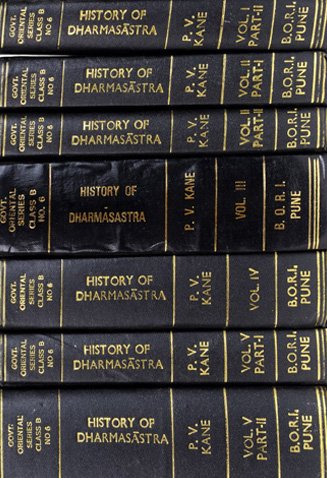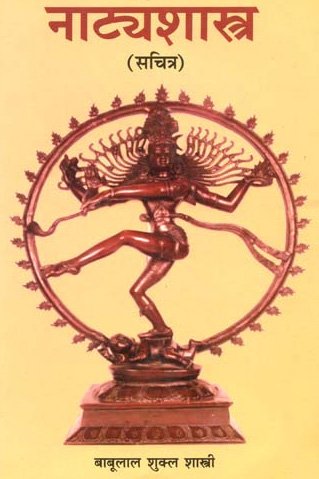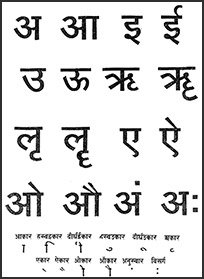Visarga: 19 definitions
Introduction:
Visarga means something in Hinduism, Sanskrit, Marathi, Hindi. If you want to know the exact meaning, history, etymology or English translation of this term then check out the descriptions on this page. Add your comment or reference to a book if you want to contribute to this summary article.
Alternative spellings of this word include Visarg.
In Hinduism
Dharmashastra (religious law)
Source: Wisdom Library: Dharma-śāstraVisarga (विसर्ग) refers to the “giving away of prizes and other presents”. The word is used throughout Dharmaśāstra literature such as the Manusmṛti. (also see the Manubhāṣya verse 7.154)

Dharmashastra (धर्मशास्त्र, dharmaśāstra) contains the instructions (shastra) regarding religious conduct of livelihood (dharma), ceremonies, jurisprudence (study of law) and more. It is categorized as smriti, an important and authoritative selection of books dealing with the Hindu lifestyle.
Natyashastra (theatrics and dramaturgy)
Source: Wisdom Library: Nāṭya-śāstra1) Visarga (विसर्ग, “spreading out”) refers to a specific gesture (āṅgika) made with the lips (uṣṭha), according to the Nāṭyaśāstra chapter 8. These gestures form a part of the histrionic representation (abhinaya).
2) Visarga (विसर्ग, “closure”) refers to “conclusion” and represents one of six “elements of diction” (aṅga). According to the Nāṭyaśāstra chapter 19, these six elements of diction are part of the ‘vocal representation’ (vācika), which is used in communicating the meaning of the drama and calling forth the sentiment (rasa).
Visarga refers to finishing a sentence. Visarga can be used in the Odious and the Terrible Sentiment.
Source: archive.org: Natya ShastraVisarga (विसर्ग, “spreading out”).—A type of gesture (āṅgika) made with the lips (uṣṭha);—Instructions: to spread out (lips). Uses: in women’s amour, affected indifference and painting of lips.

Natyashastra (नाट्यशास्त्र, nāṭyaśāstra) refers to both the ancient Indian tradition (shastra) of performing arts, (natya—theatrics, drama, dance, music), as well as the name of a Sanskrit work dealing with these subjects. It also teaches the rules for composing Dramatic plays (nataka), construction and performance of Theater, and Poetic works (kavya).
Vyakarana (Sanskrit grammar)
Source: Wikisource: A dictionary of Sanskrit grammarVisarga (विसर्ग).—Aspiration, leaving of the breath generally at the completion of the utterance of a word when there is a pause; the term विसर्जनीय (visarjanīya) was in use in ancient times. Although not mentioned in his alphabet by Pāṇini, this Phonetic element, visarga, is looked 43 upon as a letter; it is mentioned as one of the letters in the Śikṣā and the Prātiśākhya works and Patañjali has advised its inclusion in the alphabet. As visarga cannot be found in use independently of another letter (which is any vowel after which it occurs) it is called अयोगवाह (ayogavāha).

Vyakarana (व्याकरण, vyākaraṇa) refers to Sanskrit grammar and represents one of the six additional sciences (vedanga) to be studied along with the Vedas. Vyakarana concerns itself with the rules of Sanskrit grammar and linguistic analysis in order to establish the correct context of words and sentences.
Ayurveda (science of life)
Source: archive.org: Vagbhata’s Ashtanga Hridaya Samhita (first 5 chapters)Visarga (विसर्ग) refers to “liberation” and is mentioned in verse 3.5 of the Aṣṭāṅgahṛdayasaṃhitā (Sūtrasthāna) by Vāgbhaṭa.—Accordingly, “[...] the southern course (of the sun comprises) the seasons monsoon, etc. and (is named) ‘liberation’ [visarga] as it liberates strength (in man) ; for the moon (is) strong then because of its being soma-like, (while) the sun declines, the surface of the earth showing heat tempered by cool clouds, rains, and winds.”.
Note: Visarga (“liberation”) has been verbalized and paraphrased by slar stobs (b)skyed (“re-create strength”), in much the same way that ādāna (“absorption”) (v. 2) has been represented by mthu ’phrog(s)-pa (“absorbing strength”). Similarly, the corresponding visṛjati (“liberates”) has been translated by slar (b)skyed (“re-create”).
Source: gurumukhi.ru: Ayurveda glossary of terms1) Visarga (विसर्ग):—Period of liberation: period of time when moisture, unctuousness and strength of the body gets enhanced
2) [visargaḥ] Suns act of hydration bestows strength to the living organisms

Āyurveda (आयुर्वेद, ayurveda) is a branch of Indian science dealing with medicine, herbalism, taxology, anatomy, surgery, alchemy and related topics. Traditional practice of Āyurveda in ancient India dates back to at least the first millenium BC. Literature is commonly written in Sanskrit using various poetic metres.
Shaktism (Shakta philosophy)
Source: Google Books: ManthanabhairavatantramVisarga (विसर्ग) refers to “inner emission”.—The union of opposites on the analogy of sexual union and, indeed, its concrete realisation through it, is also represented by a sonic hexagon in Kashmiri Śaivism as it is in the Kubjikā sources. [...] According to Abhinavagupta the sonic equivalent of this hexagon (ṣaḍara) is the letter AI. In accord with the normal rules governing the conjunction (sandhi) of vowels in Sanskrit, the letter E is formed by the fusion of A, which represents Anuttara, the male Absolute, with I the cosmogenic Will (icchā) that issues from it through the force of its inner emission (visarga). Thus letter E is said to be ‘beautiful with the fragrance of emission’ and is represented by a downward-facing triangle that symbolizes the Yoni, AI is formed by the addition of A or Ā, which represents the Bliss (ānanda) of the Absolute, to the vowel E. The letter A is understood to be the upward-facing triangle filled with the energies of the Triangle as described above. Thus AI symbolizes the unfolding of the Bliss and the Will of the Absolute through the union of opposites represented by the two triangles of the hexagon.
Abhinava identifies the sixteenth energy of the Moon with visarga. Visarga literally means ‘emission’ and has clear sexual connotations. It is also the sixteenth and last of the series of vowels. In various places throughout his exegetical works, Abhinavagupta develops the key notion of the power of emission (visargaśakti). According to the tradition Abhinava follows, the sixteen vowels are considered to be male seeds (bīja) and the thirty-four consonants are the female wombs (yoni) fertilized by them. This is the reverse of what we most commonly find in the Tantras of most schools.

Shakta (शाक्त, śākta) or Shaktism (śāktism) represents a tradition of Hinduism where the Goddess (Devi) is revered and worshipped. Shakta literature includes a range of scriptures, including various Agamas and Tantras, although its roots may be traced back to the Vedas.
Languages of India and abroad
Marathi-English dictionary
Source: DDSA: The Molesworth Marathi and English Dictionaryvisarga (विसर्ग).—m (S) The Visarga or soft aspirate, marked by two perpendicular dots, thus: It occurs after a vowel, or after the inherent short vowel a in consonants, when ka, kha, pa, pha, śa, ṣa, or sa follows; or it marks the pause. It occurs too as the substitute for the letters sa & ra the terminations of various inflections both of nouns and of verbs. 2 Abandonment, relinquishment, quitting or giving up generally.
Source: DDSA: The Aryabhusan school dictionary, Marathi-Englishvisarga (विसर्ग).—m The soft aspirate. Abandonment.
Marathi is an Indo-European language having over 70 million native speakers people in (predominantly) Maharashtra India. Marathi, like many other Indo-Aryan languages, evolved from early forms of Prakrit, which itself is a subset of Sanskrit, one of the most ancient languages of the world.
Sanskrit dictionary
Source: DDSA: The practical Sanskrit-English dictionaryVisarga (विसर्ग).—1 Sending forth, emission.
2) Shedding, pouring down, dropping; पुरं नवीचक्रुरपां विसर्गान् मेघा निदाघ- ग्लपितामिवोर्वीम् (puraṃ navīcakrurapāṃ visargān meghā nidāgha- glapitāmivorvīm) R.16.38.
3) Casting, discharge; सरहस्यो धनुर्वेदः सविसर्गोपसंयमः (sarahasyo dhanurvedaḥ savisargopasaṃyamaḥ) Bhāgavata 1.7.44.
4) Giving away, a gift, donation; आदानं हि विसर्गाय सतां वारिमुचामिव (ādānaṃ hi visargāya satāṃ vārimucāmiva) R.4. 86 (where the word means 'pouring down' also).
5) Sending away, dismissal; हरणं च विसर्गं च शाल्वेन च विसर्जनम् (haraṇaṃ ca visargaṃ ca śālvena ca visarjanam) Mahābhārata (Bombay) 5.175.37.
6) Creation, creating; नियमे च विसर्गे च भूतात्मा मानसस्तथा (niyame ca visarge ca bhūtātmā mānasastathā) Mahābhārata (Bombay) 12.239.12; secondary creation; ब्रह्मणो गुणवैषम्याद्विसर्गः पौरुषः स्मृतः (brahmaṇo guṇavaiṣamyādvisargaḥ pauruṣaḥ smṛtaḥ) Bhāgavata 2.1.3.
7) Abandonment, relinquishment; न निष्कयविसर्गाभ्यां भर्तुर्भार्या विमुच्यते (na niṣkayavisargābhyāṃ bharturbhāryā vimucyate) Manusmṛti 9.46.
8) Voiding, evacuation; as in पुरीषविसर्ग (purīṣavisarga).
9) Departure, separation.
1) Final beatitude.
11) Light, splendour.
12) A symbol in writing, representing a distinct hard aspiration and marked by two perpendicular dots (:).
13) The southern course of the sun.
14) The penis.
15) Destruction of the world; कालो वशीकृतविसृज्यविसर्गशक्तिः (kālo vaśīkṛtavisṛjyavisargaśaktiḥ) Bhāgavata 7.9.22.
16) The function of the world (sṛṣṭivyāpāra); भूतभावोद्भवकरो विसर्गः कर्मसंज्ञितः (bhūtabhāvodbhavakaro visargaḥ karmasaṃjñitaḥ) Bhagavadgītā (Bombay) 8.3.
Derivable forms: visargaḥ (विसर्गः).
Source: Cologne Digital Sanskrit Dictionaries: Shabda-Sagara Sanskrit-English DictionaryVisarga (विसर्ग).—m.
(-rgaḥ) 1. Abandoning, relinquishment, getting rid of or free from any thing. 2. Departure, going away. 3. Separation. 4. Gift, donation. 5. Final emancipation or beatitude, exemption from worldly existence. 6. Evacuation of excrement, voiding by stool, &c. 7. The soft aspirate or Visarga, marked by two perpendicular dots, (ḥ), and as the substitute for the letters sa or ra, the termination of various inflections both of nouns and verbs. 8. A division of the sun’s course, the southern course. 9. Light, splendour. E. vi before sṛj to let go, aff. ghañ .
Source: Cologne Digital Sanskrit Dictionaries: Benfey Sanskrit-English DictionaryVisarga (विसर्ग).—i. e. vi-sṛj + a, m. 1. Abandoning. 2. Final emancipation. 3. Departure. 4. Relinquishment. 5. Dismission,
Visarga (विसर्ग).—[masculine] cessation, end; loosening, letting go; dismission, evacuation (of the body); gift, donation; hurling, throwing, casting, shooting off; production, creation ([abstract] & concr.); a kind of aspiration & its sign ([grammar]).
Source: Cologne Digital Sanskrit Dictionaries: Monier-Williams Sanskrit-English Dictionary1) Visarga (विसर्ग):—[=vi-sarga] a vi-sarjana See p.1001.
2) [=vi-sarga] [from vi-sṛj] b m. sending forth, letting go, liberation, emission, discharge, [Gṛhya-sūtra and śrauta-sūtra; Mahābhārata] etc.
3) [v.s. ...] voiding, evacuation (of excrement), [Śatapatha-brāhmaṇa; Mahābhārata; Suśruta]
4) [v.s. ...] opening (of the closed hand), [Kātyāyana-śrauta-sūtra]
5) [v.s. ...] getting rid of, sending away, dismissal, rejection, [Manu-smṛti; Mahābhārata] etc.
6) [v.s. ...] letting loose id est. driving out (cows; See go-vis)
7) [v.s. ...] final emancipation, exemption from worldly existence, [Bhāgavata-purāṇa]
8) [v.s. ...] cessation, end, [Ṛg-veda; Gṛhya-sūtra]
9) [v.s. ...] end of the annual course of the sun, [Caraka]
10) [v.s. ...] destruction of the world, [Bhāgavata-purāṇa]
11) [v.s. ...] giving, granting, bestowal, [Manu-smṛti; Mahābhārata] etc.
12) [v.s. ...] scattering, hurling, throwing, shooting, casting (also of glances), [Mahābhārata; Raghuvaṃśa; Bhāgavata-purāṇa]
13) [v.s. ...] producing, creating ([especially] secondary creation or creation in detail by Puruṣa; See under sarga), [Bhagavad-gītā; Bhāgavata-purāṇa]
14) [v.s. ...] creation (in the concrete sense), product, offspring, [Harivaṃśa; Bhāgavata-purāṇa]
15) [v.s. ...] ‘producer’, cause, [Bhāgavata-purāṇa]
16) [v.s. ...] membrum virile, [ib.]
17) [v.s. ...] the sun’s southern course, [cf. Lexicographers, esp. such as amarasiṃha, halāyudha, hemacandra, etc.]
18) [v.s. ...] separation, parting, [Horace H. Wilson] (cf. -cumbana)
19) [v.s. ...] light, splendour, [ib.]
20) [v.s. ...] Name of a symbol in grammar (= vi-sarjanīya, which is the older term See below), [Pāṇini [Scholiast or Commentator]; Śrutabodha; Mahābhārata; Bhāgavata-purāṇa]
21) [v.s. ...] Name of Śiva, [Mahābhārata xiii, 1241]
Source: Cologne Digital Sanskrit Dictionaries: Yates Sanskrit-English DictionaryVisarga (विसर्ग):—[vi-sarga] (rgaḥ) 1. m. Abandoning; gift; riddance; voiding by stool; the letter (ḥ); sun’s southern course; light, final emancipation.
Source: DDSA: Paia-sadda-mahannavo; a comprehensive Prakrit Hindi dictionary (S)Visarga (विसर्ग) in the Sanskrit language is related to the Prakrit word: Visagga.
[Sanskrit to German]
Sanskrit, also spelled संस्कृतम् (saṃskṛtam), is an ancient language of India commonly seen as the grandmother of the Indo-European language family (even English!). Closely allied with Prakrit and Pali, Sanskrit is more exhaustive in both grammar and terms and has the most extensive collection of literature in the world, greatly surpassing its sister-languages Greek and Latin.
Hindi dictionary
Source: DDSA: A practical Hindi-English dictionaryVisarga (विसर्ग) [Also spelled visarg]:—(nm) a colon-like sign (:) used in the Devnagri: script, characteristic of Sanskrit wordformations and resembling 'h' in pronunciation (as in [du:kha]).
...
Kannada-English dictionary
Source: Alar: Kannada-English corpusVisarga (ವಿಸರ್ಗ):—
1) [noun] a getting rid of; a sending away; dismissal.
2) [noun] final emancipation; exemption from worldly existence.
3) [noun] the state of destroying or being destructed; destruction.
4) [noun] destruction of the entire universe.
5) [noun] (gram.) two small circles placed one above the other to represent the sound 'ah' (:).
Kannada is a Dravidian language (as opposed to the Indo-European language family) mainly spoken in the southwestern region of India.
See also (Relevant definitions)
Starts with: Visargacumbana, Visargakala, Visargalupta, Visargamrita, Visarganta, Visargaputa, Visargashakti, Visargastha, Visargasthana, Visargodirita.
Ends with: Ahatavisarga, Ardhavisarga, Ativisarga, Avisarga, Bindu Visarga, Govisarga, Lokavisarga, Luptahatavisarga, Luptavisarga, Malavisarga, Mushtivisarga, Nirvisarga, Parayanavratabandhavisarga, Shukravisarga, Vagvisarga, Vratadeshanavisarga, Vratavisarga.
Full-text (+206): Visarjaniya, Upadhmaniya, Ardhavisarga, Jihvamuliya, Dvibindu, Upacarita, Vikranta, Visargalupta, Avikrama, Abhinishtana, Luptavisargata, Dvitha, Luptavisargaka, Nirvisarga, Luptavisarga, Visargin, Luptahatavisarga, Ariphita, Visargacumbana, Aghosha.
Relevant text
Search found 47 books and stories containing Visarga, Vi-sarga; (plurals include: Visargas, sargas). You can also click to the full overview containing English textual excerpts. Below are direct links for the most relevant articles:
Cidgaganacandrika (study) (by S. Mahalakshmi)
Part 10 - Three kinds of Visargas (flows) < [Philosophy of Kashmir Tantric System]
Verse 62 [Āṇava visarga] < [Chapter 2 - Second Vimarśa]
Verse 37 [Bindu and Visarga] < [Chapter 2 - Second Vimarśa]
Sahitya-kaumudi by Baladeva Vidyabhushana (by Gaurapada Dāsa)
Text 7.52 < [Chapter 7 - Literary Faults]
Text 7.54 < [Chapter 7 - Literary Faults]
Text 11.7 < [Chapter 11 - Additional Ornaments]
Shrimad Bhagavad-gita (by Narayana Gosvami)
Verse 8.3 < [Chapter 8 - Tāraka-brahma-yoga (the Yoga of Absolute Deliverance)]
Verse 9.29 < [Chapter 9 - Rāja-guhya-yoga (Yoga through the most Confidential Knowledge)]
Shat-cakra-nirupana (the six bodily centres) (by Arthur Avalon)
Historical Elements in the Matsya Purana (by Chaitali Kadia)
The Bhagavata Purana (by G. V. Tagare)
Part 1 - Bhāgavata Purāṇa with Ten Characteristic Topics < [Introduction]
Chapter 7 - The Branches of the Atharva Veda: Characteristics of the Purāṇas < [Book 12 - Twelfth Skandha]
First Verse of the Bhāgavata Purāṇa < [Appendices]